How to Draw a Spring Autocad
A signature of Holland, the tulip is a beautiful bulb flower that pushes through the ground each and every spring. In this beginner drawing tutorial, we show you how to create a stunning and realistic tulip illustration. This tutorial is for beginners, so we break the tulip drawing down into quick and easy steps. We begin by creating a basic tulip outline with construction shapes, before creating the final tulip sketch and breathing life into it with color. Join us as we show you how to draw a tulip in 17 easy steps!
Table of Contents
- 1 Your Step-by-Step Tulip Illustration Guide
- 1.1 Step 1: Begin to Shape the Stem
- 1.2 Step 2: Draw the First Tulip Petal
- 1.3 Step 3: Shape the Second Petal
- 1.4 Step 4: Fill In Some Obstructed Petals
- 1.5 Step 5: Finish the Petals of Your Tulip Drawing
- 1.6 Step 6: Outline the Main Tulip Leaf
- 1.7 Step 7: Shape the Second Leaf
- 1.8 Step 8: Add Some Texture to the Petals and Leaves
- 1.9 Step 9: Apply a Base Coat to the Tulip
- 1.10 Step 10: Begin Coloring the Stem and Leaves
- 1.11 Step 11: Shade the Leaves and Stem
- 1.12 Step 12: Highlight and Blend the Greenery
- 1.13 Step 13: Highlight the Petals of Your Tulip Sketch
- 1.14 Step 14: Add a Second Color to the Tulip Petals
- 1.15 Step 15: Trace Over the Tulip Outline
- 1.16 Step 16: Apply the Final Shading
- 1.17 Step 17: Create Final Highlights
- 2 Frequently Asked Questions
- 2.1 How Do You Create a Realistic Tulip Drawing?
- 2.2 What Color Should I Use for My Tulip Sketch?
Your Step-by-Step Tulip Illustration Guide
Tulips may seem like slightly difficult flowers to draw, but our tutorial breaks the process down to make it easy for artists of all levels. We begin with a series of construction steps where we draw the individual elements slowly. When we have the tulip outline complete, we can begin to add color and use shadows and highlights to create dimension. You can see an outline of the drawing process in the collage below.
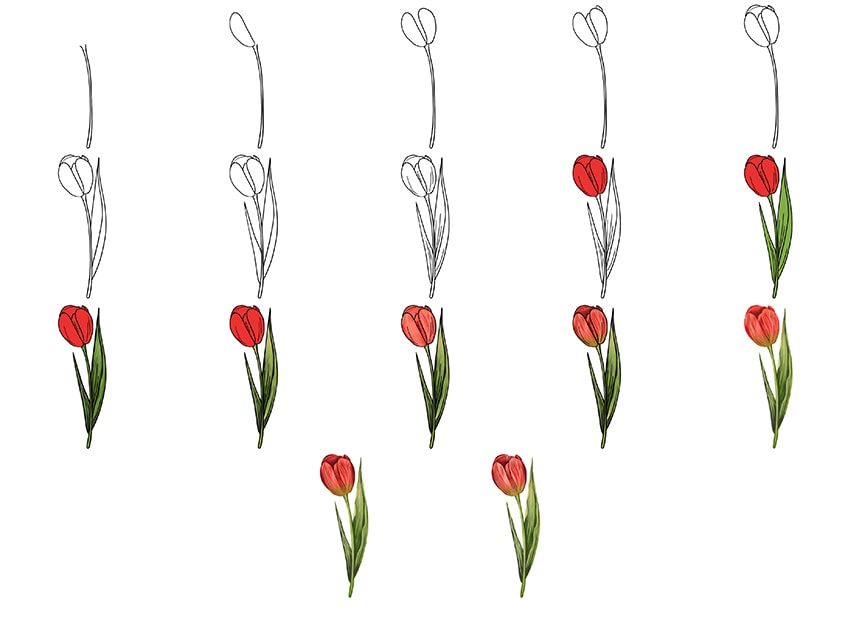
Our tutorial is written for a painting medium, but you are welcome to use any medium that you feel most comfortable with. If you are a beginner, using a new and difficult medium will only make your tulip drawing process harder than necessary. You can simply adjust the coloring steps to accommodate your chosen process.
Whether you prefer to use a digital drawing tablet, or coloring pencils, gather your drawing supplies and let us begin our tulip illustration!
Step 1: Begin to Shape the Stem
The biggest element of the tulip illustration is the stem, so we are going to begin here. Find the center of your drawing canvas, and draw a long curving stem. This stem should be a single line that begins at the top, curves down, and then comes back up to end at the same level.
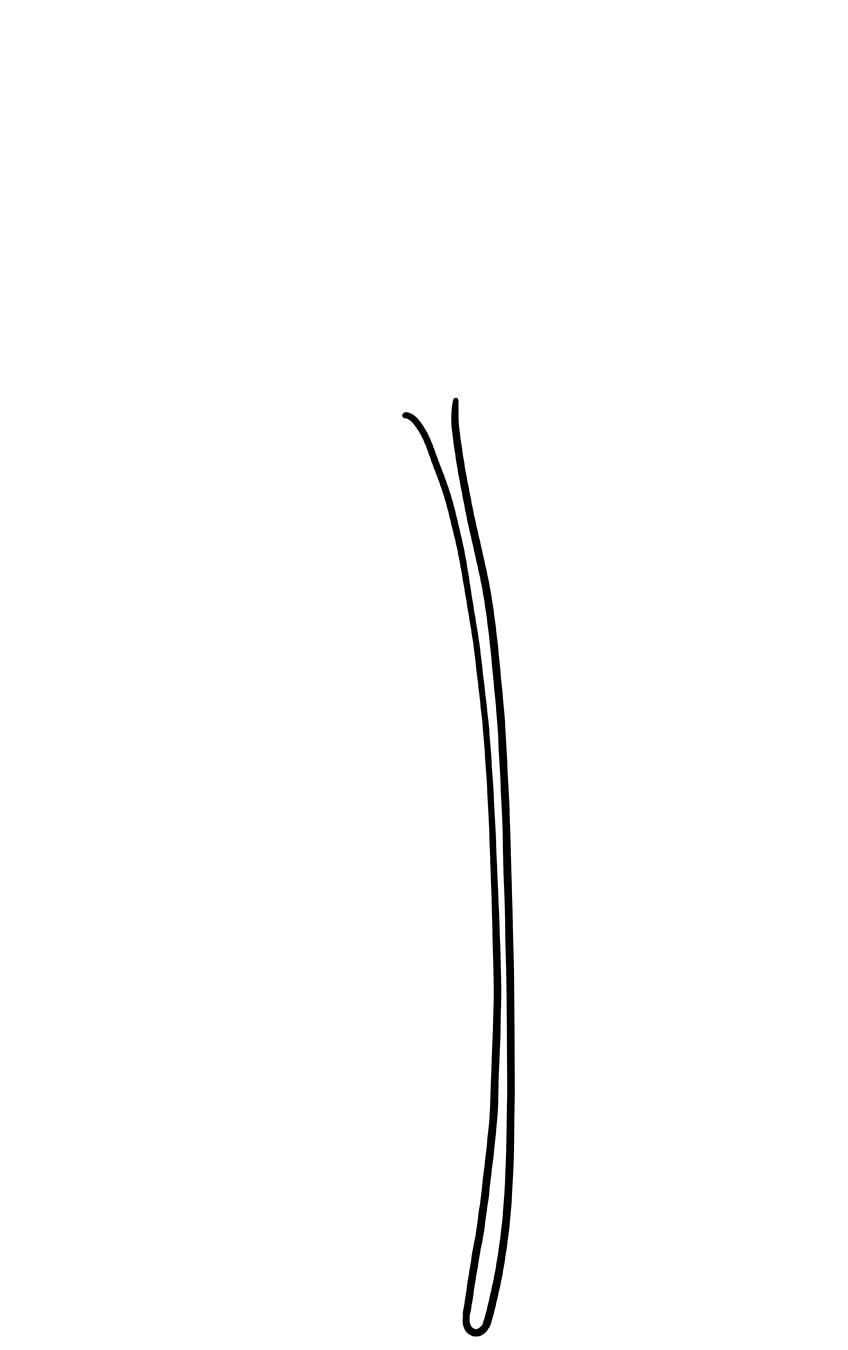
Step 2: Draw the First Tulip Petal
Attached to the left end of the stem of your tulip sketch, you can now draw the first petal. When constructing the shape, think of an orange segment. The right side of the petal should be a little flatter, and it should then curve around and down.

Step 3: Shape the Second Petal
In this step, you are simply going to repeat the previous step in a mirror image. On the right side of the stem, draw a second petal that curves in the opposite direction.
You should have a gap between these two petals.
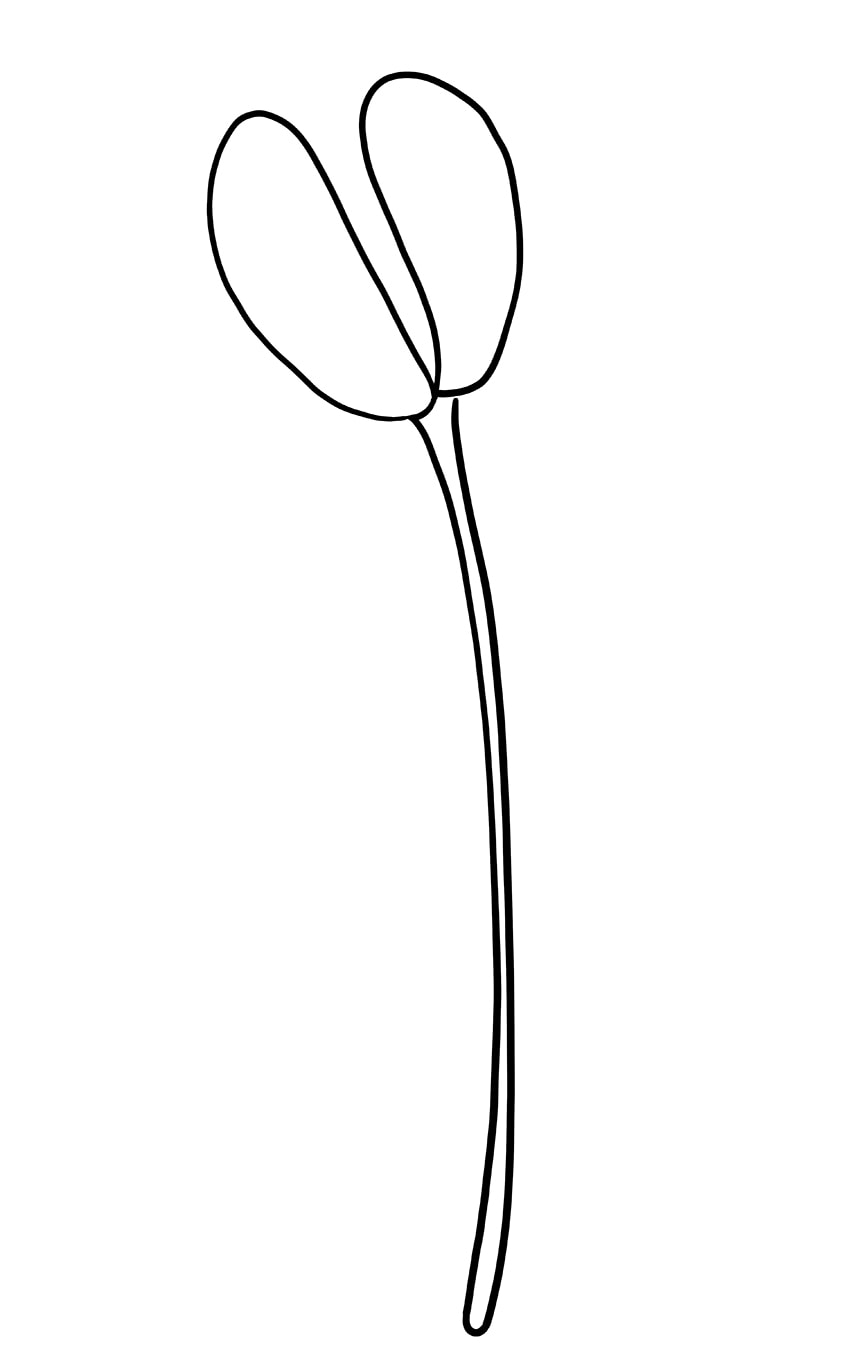
Step 4: Fill In Some Obstructed Petals
In order to enhance our realistic tulip drawing, we need to draw the petals that are only partially visible. Between the two petals from the previous steps, draw an inner petal that is only partially visible. To finish this step, draw a little peak of a petal just above the right petal.

Step 5: Finish the Petals of Your Tulip Drawing
To finish the shape of your tulip outline, you can now draw the last big petal at the back. Attached to both of the fully visible petals, draw a large curving shape. You can then draw two inner lines on this final petal and the little peak that you drew in the previous step.
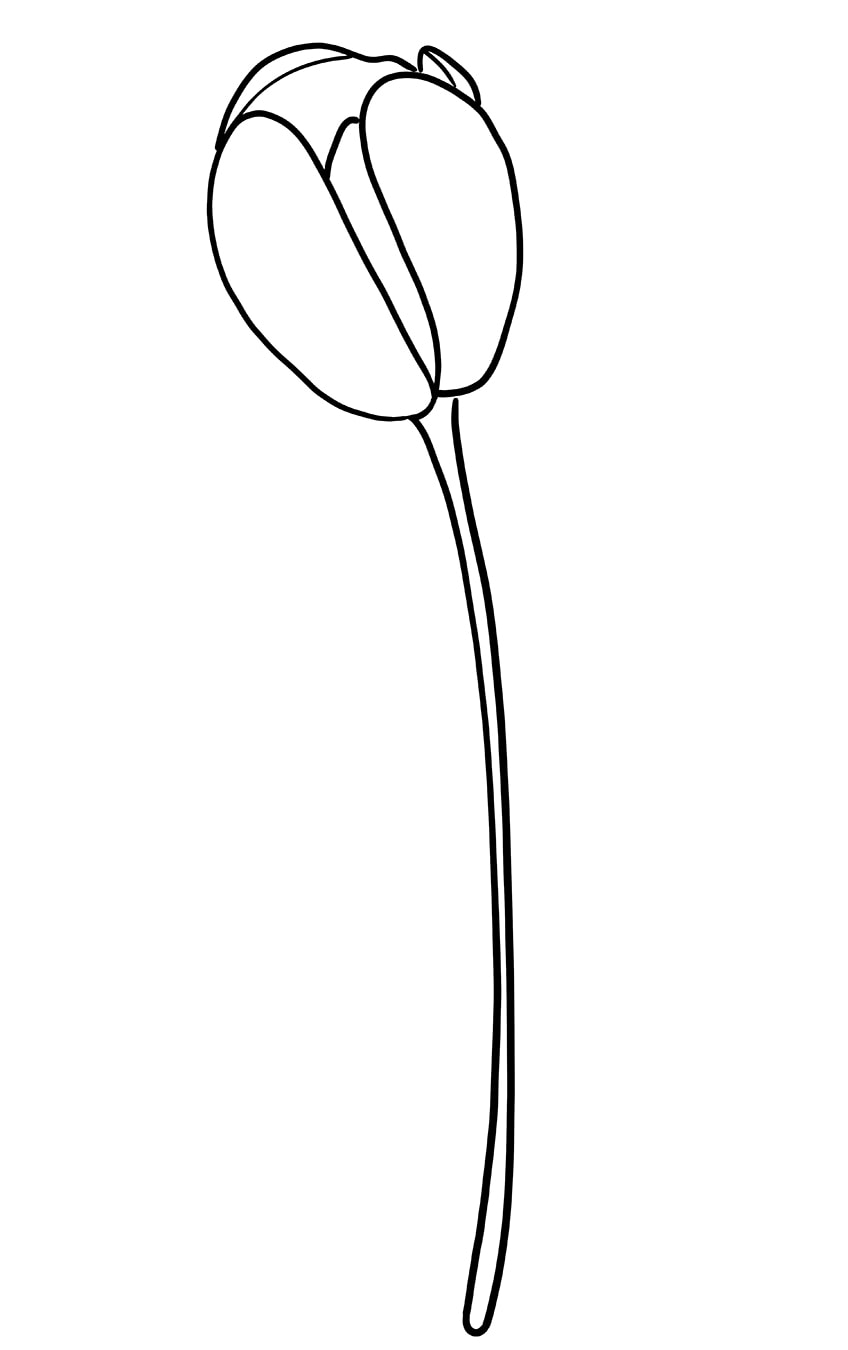
Step 6: Outline the Main Tulip Leaf
Attached to the right side of the stem, draw a long curving leaf. The leaf should begin just above the bottom of the stem, and the top point should end in line with the top of the tulip flower.
Finish this step by drawing an inner leaf line.
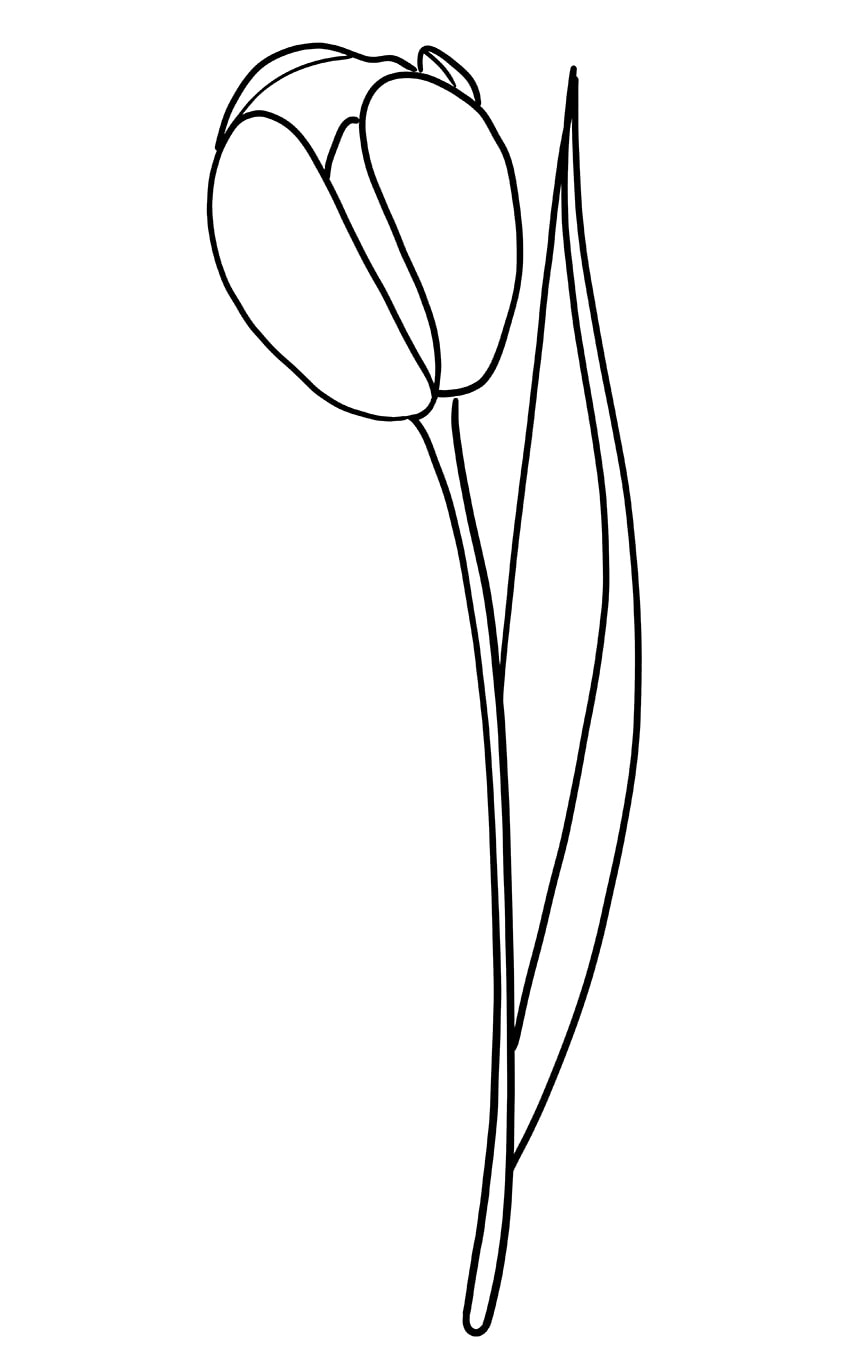
Step 7: Shape the Second Leaf
The second leaf on our realistic tulip drawing is much smaller than the first. On the left side, draw the second leaf that begins at a similar level and ends just below the beginning of the tulip flower. This leaf does not need an inner line, as the inner view of the leaf is obstructed by our view.
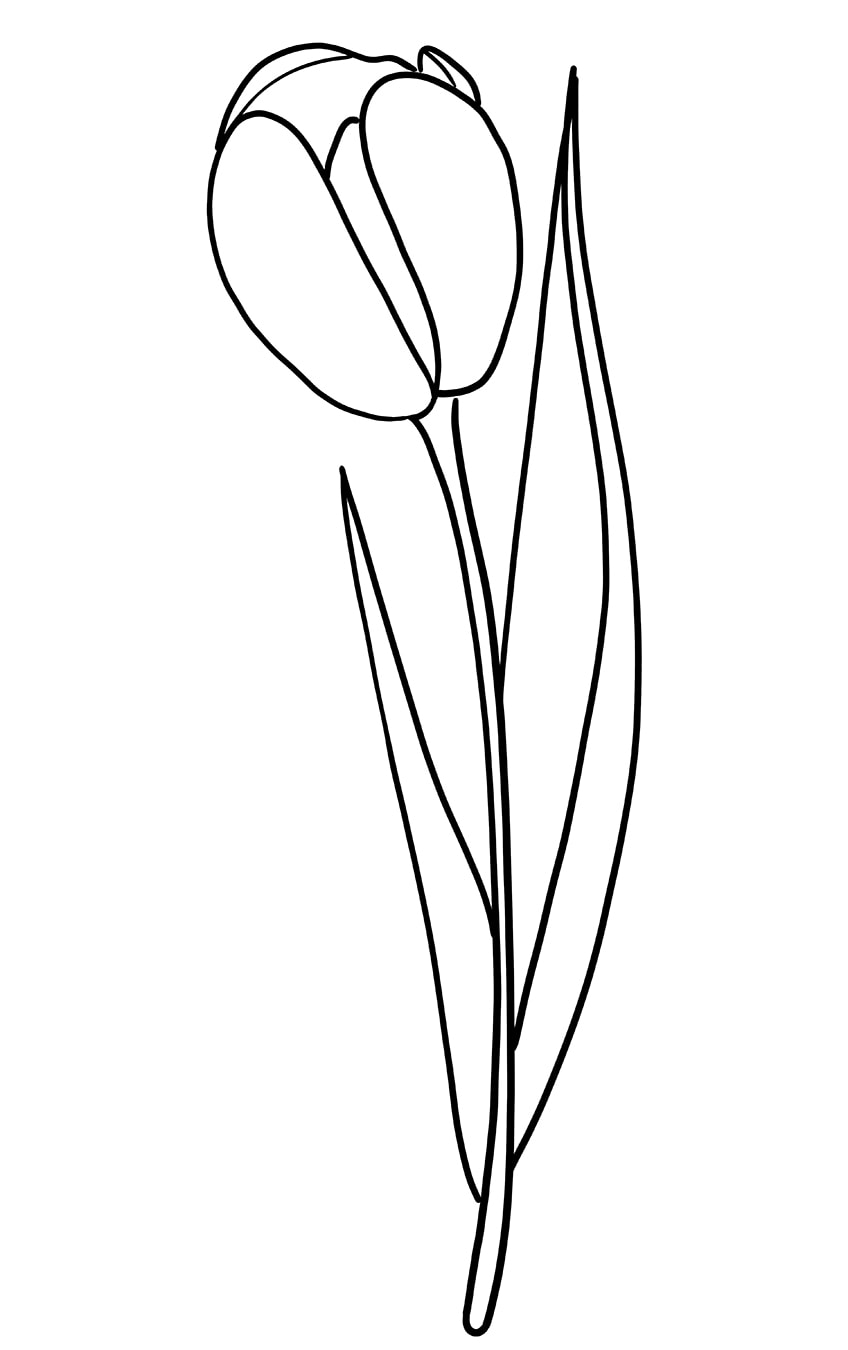
Step 8: Add Some Texture to the Petals and Leaves
In this step, you can begin to create some texture in your tulip outline. Begin with the leaves, drawing some fine sharp lines that extend from the bottoms and follow the curves of both of the leaves.
You can then repeat this texturing process in the visible petals.
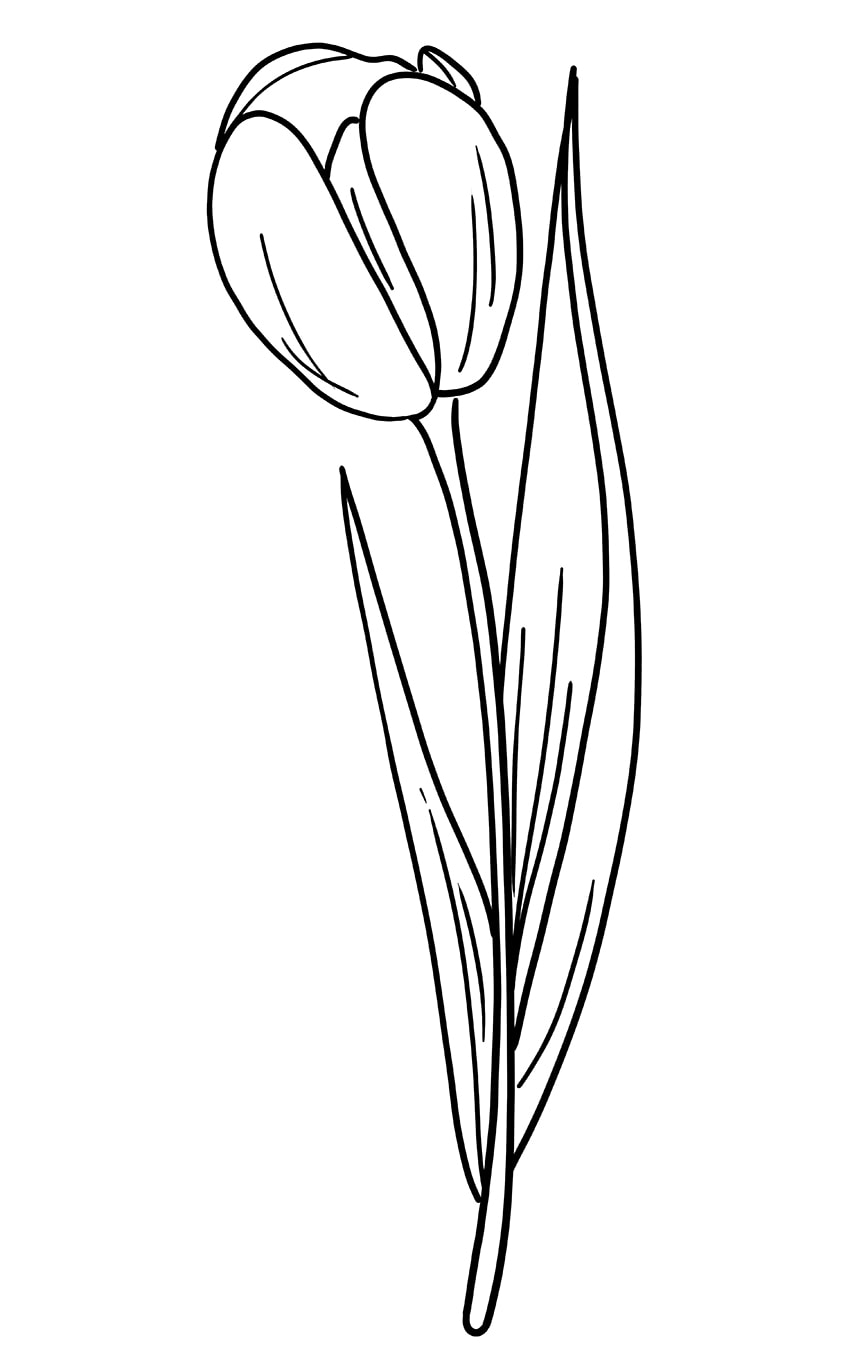
Step 9: Apply a Base Coat to the Tulip
We begin our coloring process by applying a base color coat to the tulip flower. Find a bright red shade of paint and use a regular paintbrush to apply an even coat of color to all of the petals.

Step 10: Begin Coloring the Stem and Leaves
For the stem and leaves, you are going to use a single shade of green as a base coat. With a regular brush and a shade of grass green paint, fill the stem and leaves with an even coat.
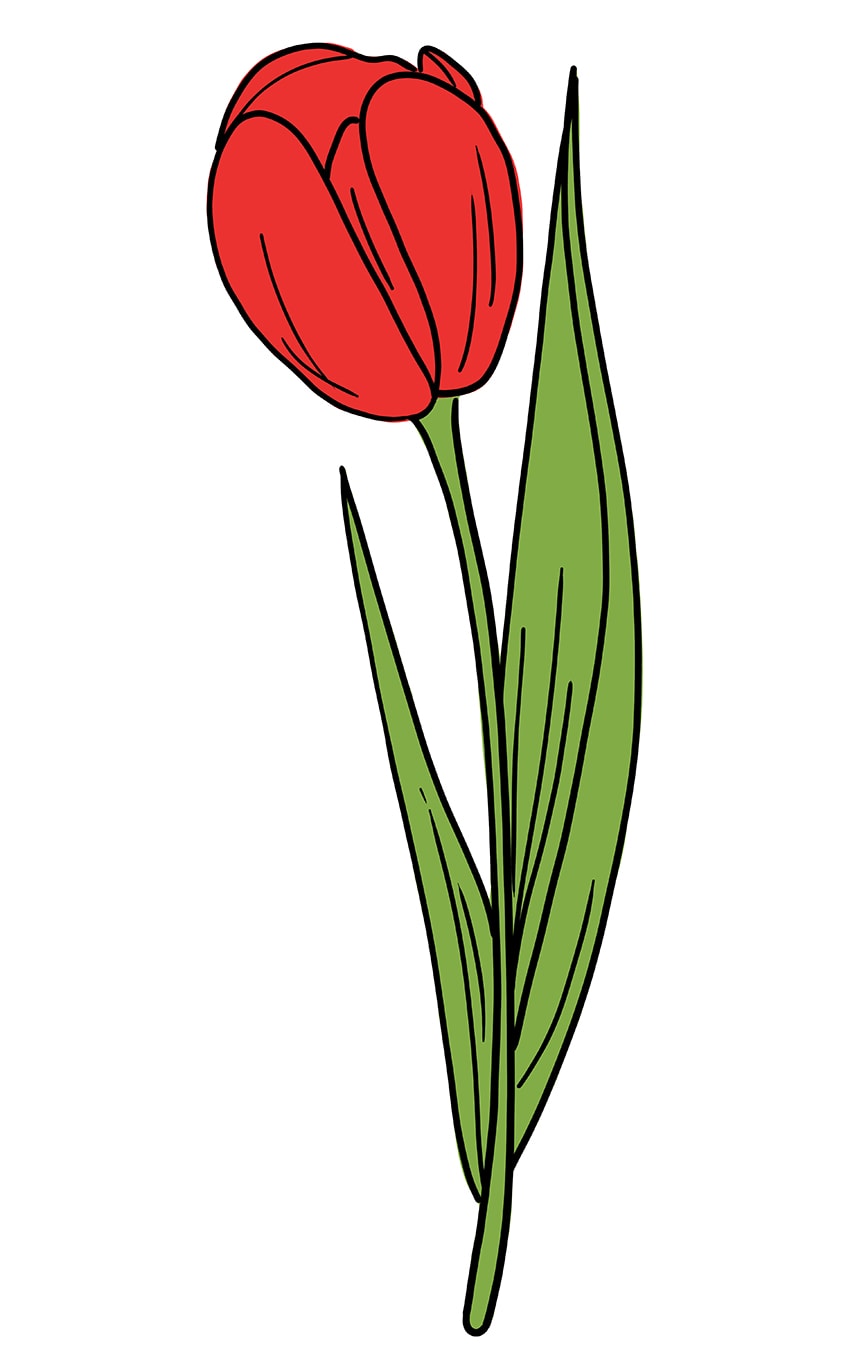
Step 11: Shade the Leaves and Stem
In this step, we begin to create dimensions in the leaves and the stem with some shading. You will need a small blending brush and a touch of black paint. Carefully apply shadows around the outline of the leaves and stem. Focus the shading at the bottom of the leaves, around the outline, and around the texture lines.
Remember to work gently to build up shading with black, as it is a strong color that is difficult to remove if you add too much.

Step 12: Highlight and Blend the Greenery
In the previous step, we added some dark definitions to the leaves and the stem. In this step, you will need a lighter shade of green paint to create some highlights. With a small blending brush, begin at the top of the leaves and stem, and gently blend the light green into the base coat and the shadows. Do the same within the stem, adding the lighter green at the top and bottom of the stem.
To complete this step and create a smooth blend of colors, use a clean blending brush to blend all of these different shades together.
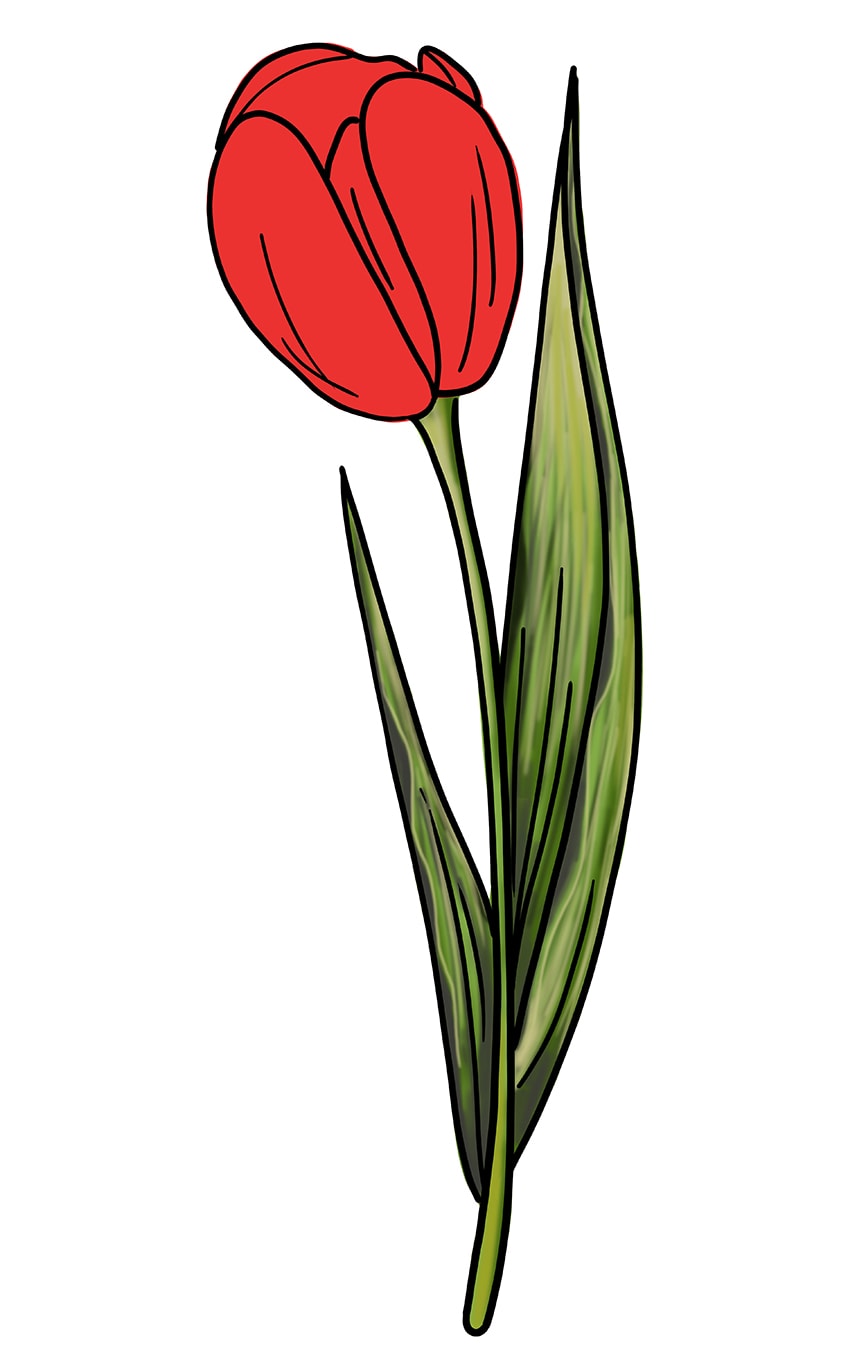
Step 13: Highlight the Petals of Your Tulip Sketch
In this step, you are going to create highlights and texture on the petals of your tulip illustration. You will need a small blending brush and either white or light orange paint. Use these tools to carefully apply texture lines within each petal, creating a soft blend between colors.
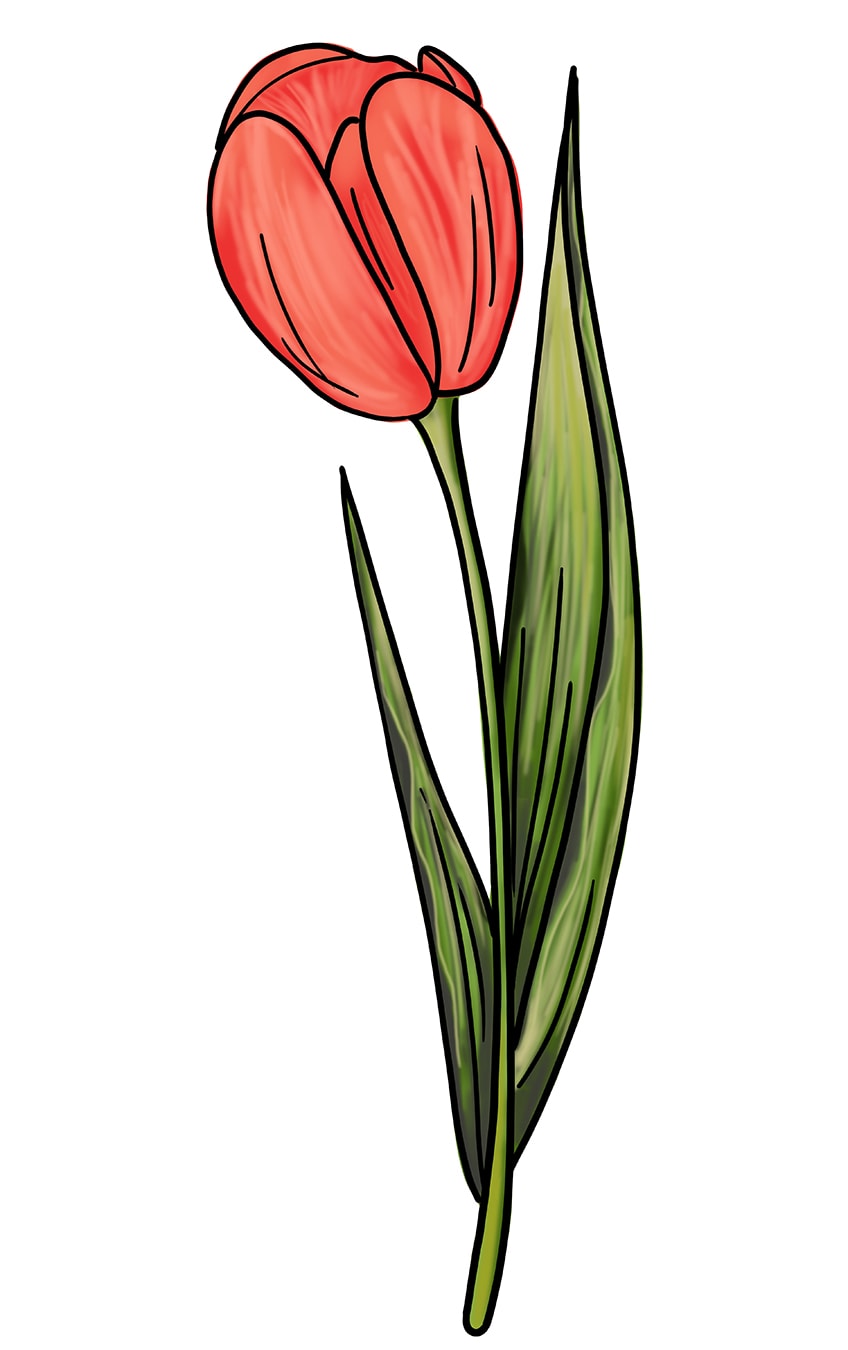
Step 14: Add a Second Color to the Tulip Petals
The flower of our tulip drawing has a seamless blend of colors. In this step, you are going to apply some shading to the inside of the tulip flower, and blend some light green into the bottom of the petals. Begin with a small blending brush and some black paint, and add a light layer of shading within the tulip flower head. Repeat this step with some light grey paint, and use this shade to add some light shadows to the outer petals.
To complete this step, use a small blending brush and carefully blend some light green paint into the bottom of the flower head.
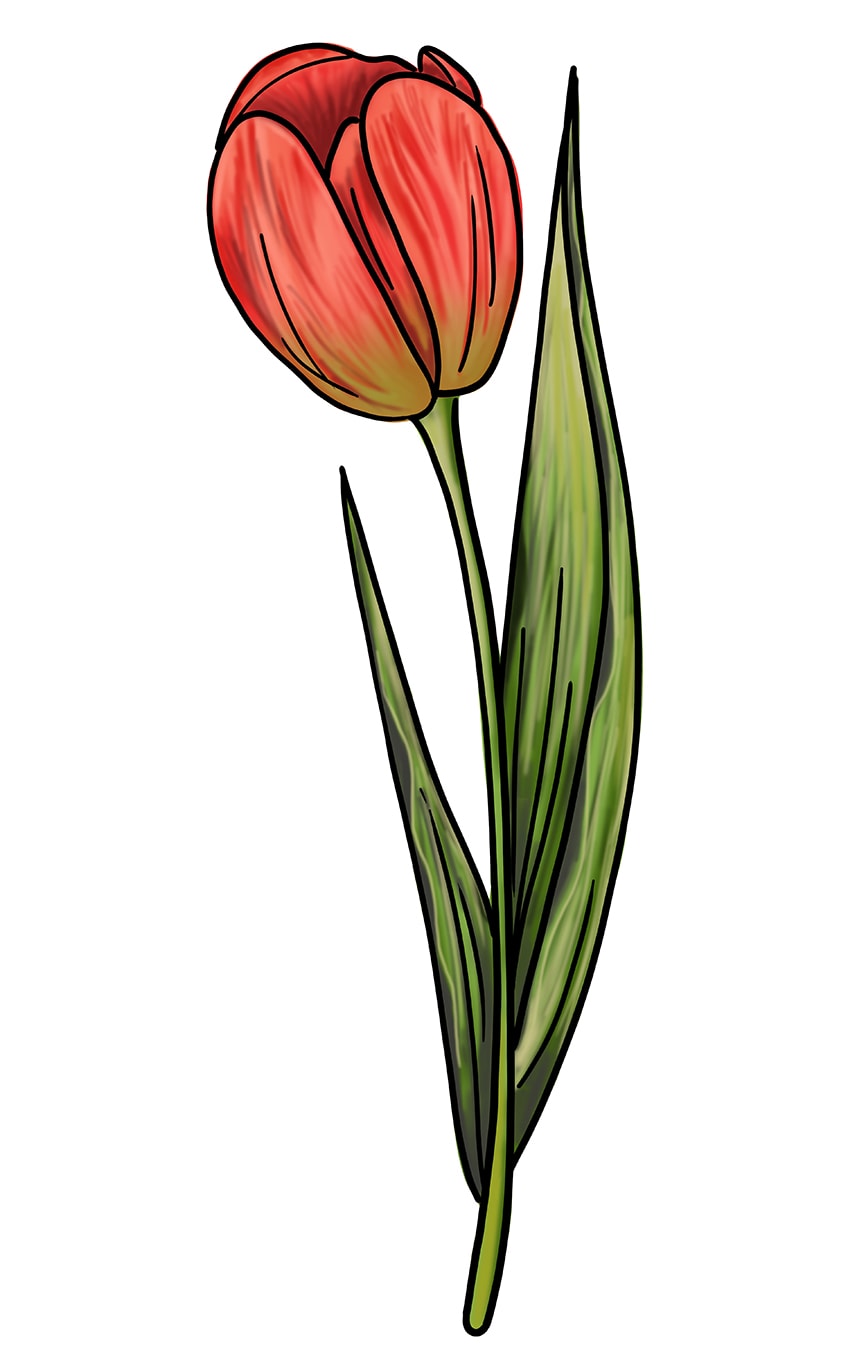
Step 15: Trace Over the Tulip Outline
As we come to the end of our tutorial on how to draw a tulip, we are going to remove the dark outline. With a sharp brush and the corresponding color at each point of the outline, carefully trace over the black lines. This will create a seamlessly realistic tulip drawing.

Step 16: Apply the Final Shading
With a soft blending brush and some dark red paint, add a light layer of shading around the outline of the tulip flower. You can also add some texture streaks in dark red on the petals.
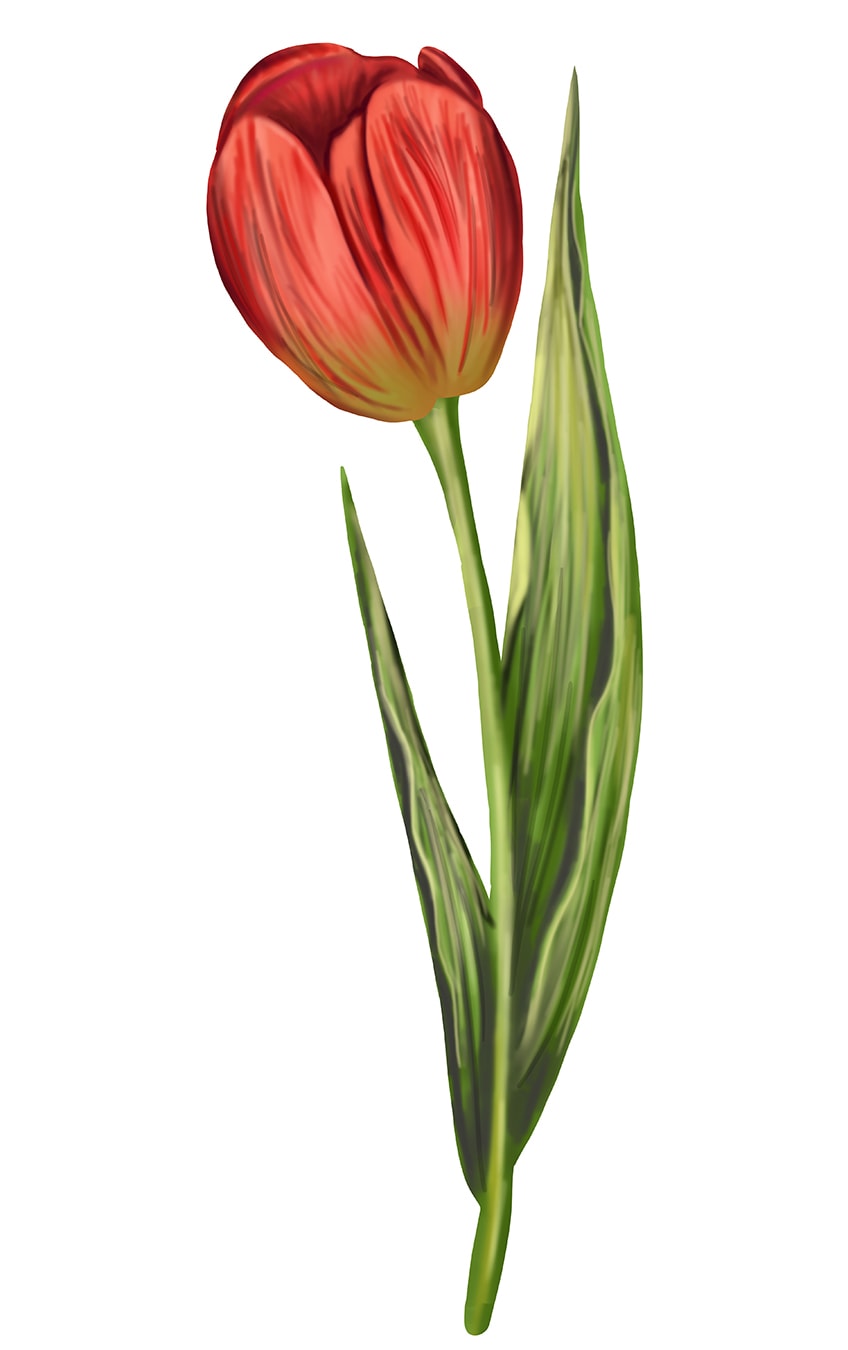
Step 17: Create Final Highlights
To complete your tulip drawing, you will need a fine brush and some white paint. Using these tools, add some fine hairline highlights and texture lines to the entirety of the tulip sketch.
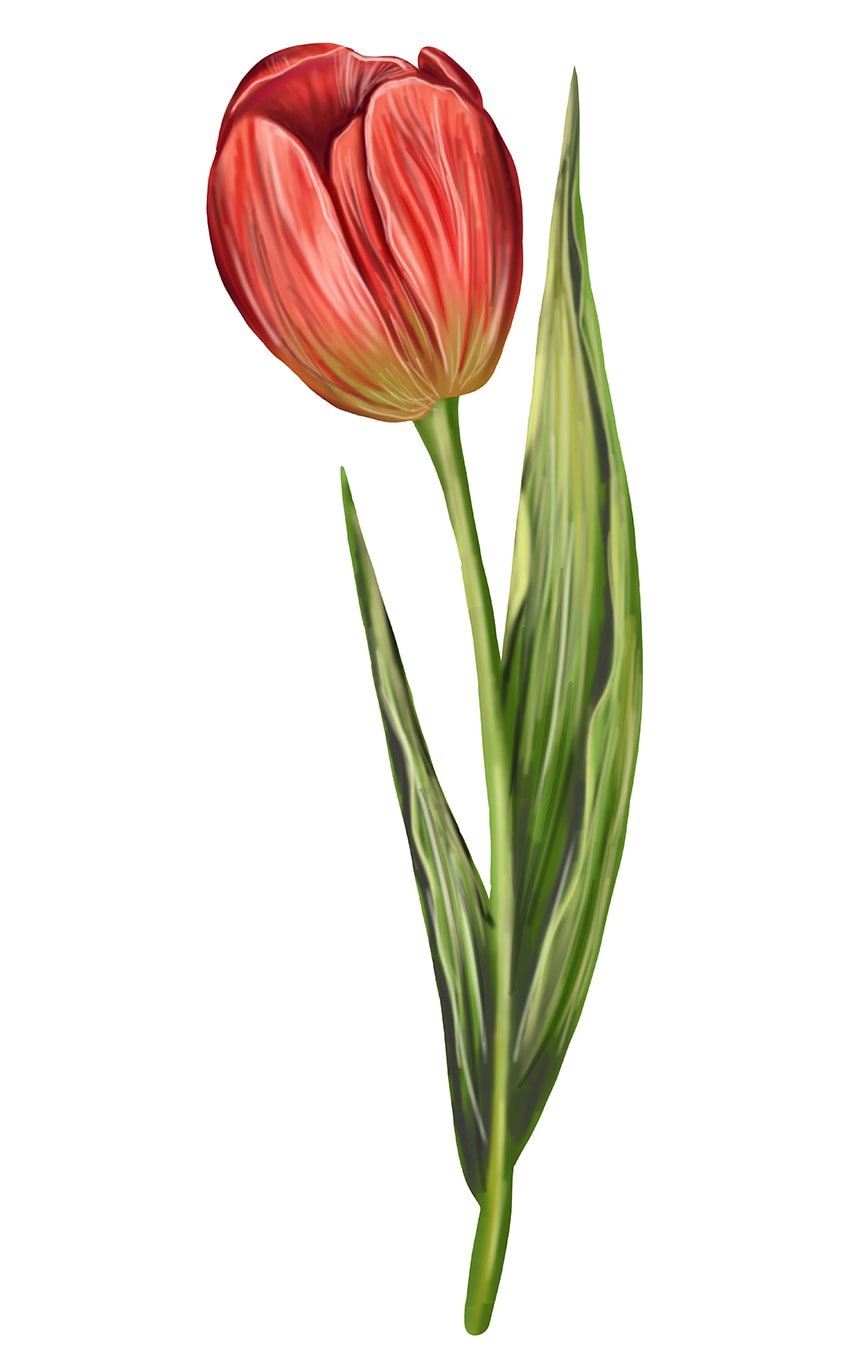
Now you know how to draw a tulip in 17 easy steps! From creating a simple tulip outline to adding realism with color, creating a realistic tulip illustration is easy for artists of all levels. We hope that you have enjoyed the process of drawing a tulip, and you are motivated to learn more about drawing different flowers. We have many more flower drawing tutorials that you can attempt, so check them out!
Frequently Asked Questions
How Do You Create a Realistic Tulip Drawing?
The key to creating realism in your tulip illustration lies in the way that you use color to create dimension and texture. In our tulip drawing tutorial, we guide you through the process of blending colors together and creating realistic texture on the petals and leaves.
What Color Should I Use for My Tulip Sketch?
Tulips come in a wide variety of colors, including red, yellow, and orange. You are welcome to use any color that you like! Our tulip illustration tutorial shows you how to draw a red tulip, but it is easy enough for you to adjust the instructions for any color that you like.
whittleseliestionce.blogspot.com
Source: https://artincontext.org/how-to-draw-a-tulip/
0 Response to "How to Draw a Spring Autocad"
Postar um comentário